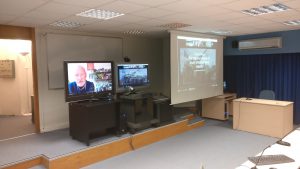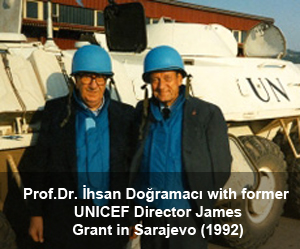On 2 May 2018, the Center for Foreign Policy and Peace Research hosted the fourth session of the Third E-Workshop “Defense Industries in the 21st Century: A Comparative Analysis”. In this session, we had two presentations. Sarah Kirchberger, Head of the Center for Asia-Pacific Strategy at the Institute for Security Policy Kiel University, presented the paper entitled: ‘’A tangled web: China’s quest for mil-tech modernization and the impact of its defense-industrial collaboration with Russia and Ukraine’’. Ron Matthews, the Cranfield University Chair in Defense Economics at the UK Defense Academy and Collin Koh, a research fellow at S. Rajaratnam School of International Studies, presented the paper entitled, ‘’ The Rise and Demise of South Africa’s Defense Industry’’.
Abstracts:
‘’A tangled web: China’s quest for mil-tech modernization and the impact of its defense-industrial collaboration with Russia and Ukraine’’
With its “Made in China 2025” and Civil-Military Integration initiatives, China is on a quest for constructing a world-class military-industrial base capable of indigenous innovation at the technological frontier. This implies the need to leave behind a platform-centric view of military modernization, and calls for a capability-oriented, multi-domain orientation that involves innovations in space, cyber, AI, unmanned systems, and other cutting-edge fields.
For decades, the Chinese military modernization effort has been hampered by a long-standing arms embargo imposed by the Western powers in 1989. This effectively limited China’s choice of arms suppliers to post-Soviet countries, except in dual-use areas. As a consequence Russia, China’s erstwhile strategic competitor, became a primary source of advanced weaponry. Following the Crimea crisis of 2014, Sino-Russian defense-industrial collaboration markedly intensified, with China able to profit from the breakdown of a previously near-symbiotic arms-producing partnership between Russia and Ukraine – another strategic defense-industrial partner of China. As a by-product of Western and Ukrainian sanctions imposed on Russia since 2014, China was able to extract more favorable conditions for its Russian arms technology imports than ever before, while also deepening its ties to Ukrainian industries. Meanwhile, Russia and China have become the world’s second and third largest arms-exporting countries respectively, and might in the future increasingly compete over market shares in the developing world.
This paper aims to examine how the Russian-Chinese defense-industrial partnership has evolved during the past two decades, and how it contributes to the overall impetus of China’s military modernization.
‘’ The Rise and Demise of South Africa’s Defense Industry’’.
South Africa’s defence industry has a chequered development profile. During the early post-WWII decades, its expansion was influenced by Apartheid, UN sanctions and the nature of the African threat. This led to the emergence of a highly successful defence-industrial model, built around capital-saving, home-grown technology and weapons design, including hybridisation. In many respects, the 2000 ‘sale of the century’ was the high point of South African defence industrialisation, reflecting acquisition of impressive frontier weapons systems and local production through offset programmes, but also the beginning of the demise of indigenous defence capacity as defence globalisation caused the loss of domestic industry and jobs. The end of the Cold War exacerbated the decline, which not even the 1994 lifting of the arms embargo could halt. Since that time South Africa’s defence industry has suffered hugely from reductions in defence spending and acquisition. Arms exports offer some hope, but they compete in a fiercely competitive international defence market, and thus the future looks challenging.




